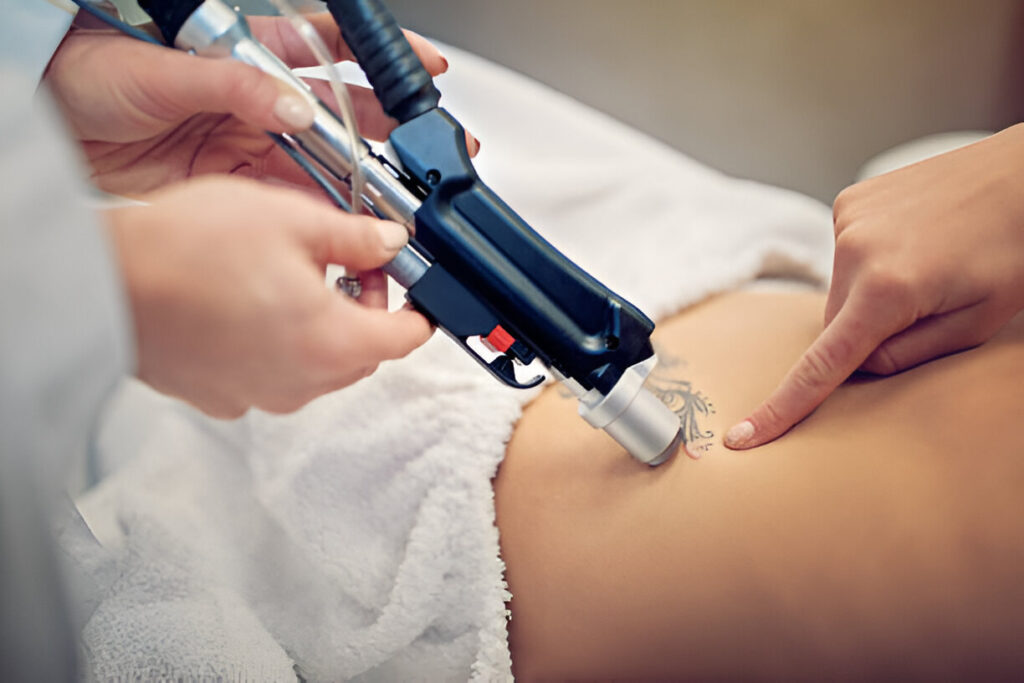The art of tattooing has been a cultural and personal expression for centuries, but just as the demand for tattoos has grown, so has the interest in tattoo removal. Whether due to changes in personal taste, lifestyle, or professional requirements, the desire to remove tattoos has led to significant advances in removal technologies. This article delves into the state-of-the-art methods available today for tattoo removal, focusing on the role of modern technology in making this process more effective and accessible.
The Evolution of Tattoo Removal
Historically, tattoo removal options were limited and often painful, involving invasive procedures like dermabrasion, salabrasion, and surgical excision. These methods not only risked scarring but were often ineffective in fully removing the tattoo. However, with the advent of laser technology in the late 20th century, the field of tattoo removal experienced a revolution.
Laser Tattoo Removal: The Gold Standard
Laser tattoo removal is now considered the gold standard due to its precision and effectiveness. This technique leverages advanced laser systems to break down tattoo ink particles in the skin, which are then naturally eliminated by the body’s immune system.
- How It Works
Laser tattoo removal utilizes specific wavelengths of light that target the ink particles in the skin. The laser emits short pulses of light that penetrate the skin and are absorbed by the tattoo pigment. This causes the ink particles to shatter into smaller fragments, which are then gradually eliminated by the body’s lymphatic system.
Different types of lasers are used depending on the ink colors and skin type. For example, the Q-switched Nd:YAG laser is commonly used for darker ink colors, while the Alexandrite and Ruby lasers are more effective for treating colors like green and blue.
Treatment Process
The process begins with a consultation to assess the tattoo and determine the appropriate laser settings. Factors such as ink color, depth, and skin type are considered. During the treatment, protective eyewear is worn, and a topical anesthetic may be applied to minimize discomfort. The laser is then directed at the tattoo, with each session lasting from a few minutes to an hour, depending on the size and complexity of the tattoo.
Advances in Laser Technology
Recent advancements in laser technology have significantly improved the efficacy and safety of tattoo removal. One such innovation is the development of picosecond lasers, which deliver energy in trillionths of a second. This allows for more precise targeting of ink particles, resulting in faster removal with fewer sessions and reduced risk of skin damage.
Picosecond Lasers
Picosecond lasers have revolutionized the field of tattoo removal. They are particularly effective for stubborn inks and complex tattoos that were previously difficult to treat with traditional nanosecond lasers. The shorter pulse duration allows for more efficient breakdown of ink particles, leading to quicker results and less discomfort.
Non-Laser Tattoo Removal Techniques
While laser removal is predominant, there are alternative methods available for those who may not be suitable candidates for laser treatment or are seeking different options.
Tattoo Removal Creams
Over-the-counter tattoo removal creams claim to fade tattoos gradually. However, their effectiveness is widely debated, and they often fail to deliver significant results. These creams typically contain ingredients that attempt to bleach or peel the skin, but they do not penetrate deep enough to affect the ink particles.
Saline Tattoo Removal
Saline tattoo removal involves injecting a saline solution into the tattooed area. The solution absorbs the ink particles, which are then expelled through the skin’s surface. This method is generally less effective than laser removal and may require multiple sessions for visible results.
Dermabrasion
Dermabrasion is a more invasive technique that involves sanding down the skin’s surface to remove the tattoo. It is rarely used today due to the potential for significant scarring and discomfort.
Choosing the Right Method
Selecting the appropriate tattoo removal method depends on various factors, including the tattoo’s size, location, color, and the individual’s skin type. Consulting with a qualified professional is crucial to determine the best approach and to set realistic expectations for the removal process.
Laser Tattoo Removal
Toronto laser tattoo removal clinics have become increasingly popular, offering state-of-the-art technology to cater to diverse clientele. These clinics often boast highly trained professionals and cutting-edge equipment, ensuring safe and effective treatment for those looking to remove unwanted tattoos.
Potential Risks and Considerations
While modern tattoo removal technologies have minimized risks, it is important to be aware of potential side effects. Common issues include temporary redness, swelling, blistering, and changes in skin pigmentation. In rare cases, scarring may occur. Therefore, selecting a reputable clinic and following post-treatment care instructions are essential for minimizing complications.
The Future of Tattoo Removal
As technology continues to advance, the future of tattoo removal looks promising. Research is ongoing into new laser technologies and methods that could further enhance the speed and effectiveness of tattoo removal. Additionally, developments in biocompatible inks that are easier to remove may revolutionize the industry.
Conclusion
Modern tattoo removal technologies have transformed the process from a painful, unreliable experience to a safe and effective solution. With innovations like picosecond lasers and the widespread availability of specialized clinics, individuals now have more options than ever to erase tattoos they no longer desire. As technology progresses, the efficacy and accessibility of tattoo removal treatments will continue to improve, making it easier for individuals to embrace change and move forward without permanent reminders of their past tattoo choices.

